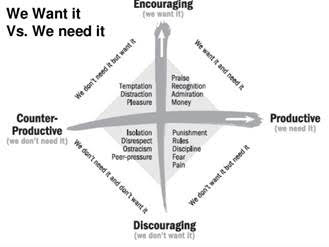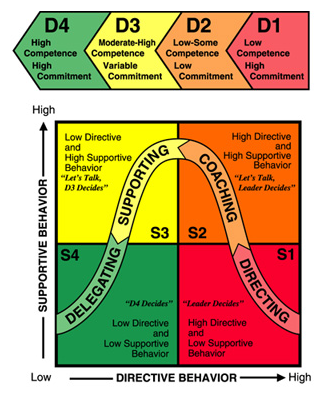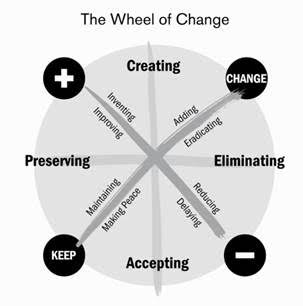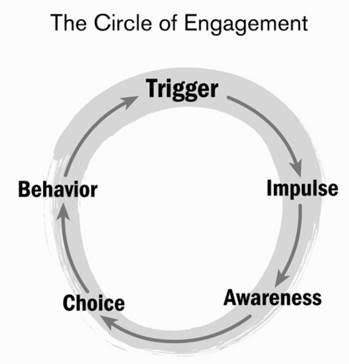Triggers
Author : Marshall Goldsmith
Genre : Self-improvement / Behavioural change

“Triggers can give you the self-awareness you need – to create your own world – rather than being created by the world around you.” Allan Mulally, US CEO of the Year (CEO Magazine) and #3 Greatest Leader in the World (Fortune magazine).
Triggers book is about adult behavioural change. As per the author, Marshall, our environment is the most potent triggering mechanism in our lives – and not always for our benefit. We make plans, set goals, and stake our happiness on achieving these goals. But our environment constantly intervenes. Due to strong environmental factors, which are outside our control, we feel like victims of circumstance; Puppets of fate. But the author says, fate is the hand of cards we have been dealt and choice is how we play the hand.
Why don’t we become the person we want to be?
Truth #1: Meaningful behavioural change is very hard to do. It’s hard to initiate behavioural change, even harder to stay the course, hardest of all to make the change stick. We can’t admit that we need to change. We do not appreciate the inertia’s power over us. We don’t know how to execute a change.
Truth #2: No one can make us change unless we truly want to change. Some people say they want to change, but they don’t mean it.
Some of the belief triggers that stop behavioural change in its tracks are – If I understand, I will do (just because people understand what to do doesn’t ensure that they will actually do it); I have willpower and won’t give in to temptation; Today is a special day; I shouldn’t need help and structure; I won’t get tired and my enthusiasm will not fade; I have all the time in the world; I won’t get distracted and nothing unexpected will occur; An epiphany will suddenly change my life.
Overconfidence, stubbornness, magical thinking, confusion, resentment, procrastination, are some of the heavy baggage that we carry on our change journey.
As per author, our environment is a nonstop triggering mechanism whose impact on our behaviour is too significant to be ignored. And hence author suggests to giving our environment a name. Our environment can also be the angel on our shoulder, making us a better person. Author uses below classification for different Triggers.

We are superior planners and inferior doers
In an interesting perspective, author helps us understand how we can apply Hershey and Blanchard’s Situational Leadership model to ourselves. Author states that just like we have a manager and an employee in a task, similarly both Planner and Doer are within us, and this is where Situational leadership model can be used. While starting our day, we make our to-do list and we are playing the role of a planner, but however as the day progresses the Doer takes control. We must ask ourselves: When has our day ever worked out note for note as we planned it?

The boxer-philosopher Mike Tyson said, “Everyone has a plan until they get punched in the face.” As we wander through life, what punches us in the face repeatedly is our environment.
Wheel of change

Author uses a simple, Wheel of Change tool to help us understand and choose what we must do with our different behaviours in our journey of change.
Creating represents the positive elements that we want to create in our future. E.g. “A shorter commute to work.”
Preserving represents the elements that we want to keep in the future. E.g. “The sanctity of my family.”
Eliminating represents the negative elements that we want to eliminate in the future. E.g. “My current commute to work.”
Accepting represents the negative elements that we need to accept in the future. E.g. “I will never get better at golf.”
The power of active questions
As per author, Apologizing is a magic move; Asking for help is a magic move; Optimism is a magic move; and the fourth magic move is asking active questions. Author says, people don’t get better without follow-ups, hence we should get better at following up with our people. This where author takes next step and introduces the concept of engaging questions. Some of the examples of engaging questions that we can ask ourselves to implement the desired changes are: Did I do my best to set clear goals today?; Did I do my best to find meaning today?; Did I do my best to be happy today?; Did I do my best to build positive relationships today?
These engaging questions offer a structured approach to implementing change and as author says, “We do not get better without structures.” Author advises to score ourselves each day on these questions and observe the scoring over some extended period. These set of engaging questions reinforce our commitment; ignite our motivation where we need it, not where we don’t; highlight the difference between self-discipline and self-control; shrink our goals into manageable increments.

AIWATT
Authors shares that in every endeavour we do, there are first principles that increase our chances of success in that endeavour. Like in carpentry it’s Measure twice, cut once; in sailing it’s Know where the wind is coming from; similarly, Author has built a first principle for becoming the person we want to be. It is phrased in the form of a question we should be asking ourselves whenever we must choose to either engage or “let it go.”
Am I willing,
at this time,
to make the investment required
to make a positive difference
on this topic?
As Peter Drucker said, “Our mission in life should be to make a positive difference, not to prove how smart or right we are.”
Towards the end, the author emphasizes the importance of Awareness and Choice, along with structures (engaging questions), to helps us understand the circle of engagement. This is what will help us change and become the person we want to be.

Goodreads Link: Triggers: Creating Behavior That Lasts—Becoming the Person You Want to Be by Marshall Goldsmith | Goodreads

 This information will never be shared with third party
This information will never be shared with third party
Very well written